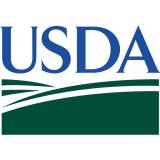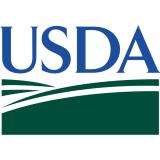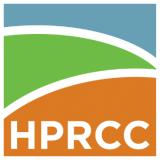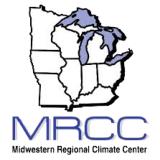Drought Persistence Expected in the Northern Great Plains into Summer.
Key Points
- Drought conditions persisted, intensified, and developed across northern parts of the central U.S. after winter and early spring precipitation have not brought adequate relief, particularly in eastern Montana, much of North Dakota, South Dakota, and Wyoming, as well as western Colorado, and northwest Iowa where extreme drought (D3) is present. Abnormally dry conditions have expanded across the Great Lakes basin as well and is an area to watch for further drought development.
- Drought impacts in the areas with extreme drought are widespread geographically and across sectors, including early wildfire activity, decreased livestock forage availability, reduced rural water supply and quality, reduced recreation and tourism, increased mental stress, and ecological impacts due to reduced water levels/availability. South Dakota’s Governor just declared a state of emergency through June 1, 2021, due to severe drought and dangerous fire conditions.
- With uncertainty in the precipitation outlooks, combined with likely warmer-than-normal temperatures and current water deficits, drought conditions are expected to persist in the northern Great Plains through spring and early summer. Western parts of Nebraska and Kansas could see drought re-emerge as well.
- Existing drought issues like increased fire risk, inadequate soil moisture for crops, poor pasture conditions, low water supply for livestock and municipal use, water quality issues, and stress on mental health are expected to continue in already-affected areas, and may worsen into the summer.
Current U.S. Drought Monitor map for the National Weather Service Central Region with data valid for March 30, 2021. The U.S. Drought Monitor (USDM) is updated each Thursday to show the location and intensity of drought across the country. Drought categories show experts’ assessments of conditions related to dryness and drought including observations of how much water is available in streams, lakes, and soils compared to usual for the same time of year.
U.S. Drought Monitor Categories
Current U.S. Drought Monitor map for the National Weather Service Central Region with data valid for March 30, 2021. The U.S. Drought Monitor (USDM) is updated each Thursday to show the location and intensity of drought across the country. Drought categories show experts’ assessments of conditions related to dryness and drought including observations of how much water is available in streams, lakes, and soils compared to usual for the same time of year.
Current Conditions and Impacts
Current Conditions
- Drought conditions persisted, intensified, and developed across northern parts of the central U.S. after winter and early spring precipitation have not brought adequate relief, particularly in eastern Montana, much of North Dakota, South Dakota, and Wyoming, as well as western Colorado, and northwest Iowa where extreme drought (D3) is present. Three-month precipitation was only 5-50% of normal across much of the Dakotas.
- The entire state of North Dakota is covered by various levels of drought. After a brief break over January and February, extreme drought (D3) was reintroduced into the state (currently covers 47% of the state). South Dakota and Wyoming are also experiencing widespread drought, with 78% and 71% of the state in drought, respectively, with extreme drought (D3) impacting both states. While most of Iowa is drought free, northwest Iowa has seen persistent moderate to extreme drought (D1-D3) conditions since early October 2020.
- Due to below-normal winter/early spring precipitation and limited soil moisture, abnormally dry conditions have expanded across the Great Lakes basin, with moderate drought (D1) present in northern Minnesota, southern Michigan, northern Indiana, and northwest Ohio.
Percent of Normal Precipitation: December 31, 2020–March 30, 2021

Drought Impacts
- There is much concern among producers in the northern Great Plains regarding the current drought conditions, particularly this early in the spring, and what it means moving into the growing season.
- Drought impacts in the areas with extreme drought are widespread geographically and across sectors, including early wildfire activity, decreased livestock forage availability, reduced rural water supply and quality, reduced recreation and tourism, increased mental stress, and ecological impacts due to reduced water levels/availability.
- South Dakota’s Governor just declared a state of emergency through June 1, 2021 due to severe drought and dangerous fire conditions.
- Fire activity is a major issue in the Dakotas and Montana. Fire activity in North Dakota so far this year already exceeds the acres burned in all of 2020. Wildfires near Rapid City, South Dakota, have forced the evacuation of more than 400 homes and closed Mount Rushmore National Monument. Two grass fires burned 39 square miles on the Blackfeet Indian Reservation, which forced 600 residents to evacuate. Michigan and Minnesota have also had an early start to the fire season, and an increased number of burn bans as a result.
- Livestock producers in North Dakota are beginning to reduce herds in anticipation of reduced forage production and lack of available water in summer pastures
Drought in Burke County, North Dakota

Outlook and Potential Impacts
- The outlook for April shows a greater chance for above-normal precipitation across a portion of the northern Great Plains, namely North Dakota and Minnesota, which could potentially bring some relief. However, above-normal temperatures are also expected during this time, which could mean loss of surface moisture to the atmosphere.
- The April precipitation outlook is more uncertain in most other areas of the central U.S., with equal chances for above-, near-, or below-normal precipitation. The outlook does lean towards below-normal precipitation in western Nebraska and western Kansas, which could mean drought re-emergence in these areas.
- With uncertainty in the precipitation outlooks, combined with likely warmer-than-normal temperatures and current water deficits, drought conditions are expected to persist in much of the northern Great Plains through April and likely into early summer as well.
- The monthly drought outlook for April shows potential drought development in western portions of the Great Lakes basin.
- Existing drought issues like increased fire risk, inadequate soil moisture for crops, poor pasture conditions, low water supply for livestock and municipal use, water quality issues, and stress on mental health are expected to continue in already-affected areas, and may worsen into the summer.
One-Month Precipitation Outlook: April 2021

U.S. Seasonal Drought Outlook, Valid for April 2021

For More Information
- NIDIS and its partners will issue future updates as conditions evolve.
- More local information is available from the following resources:
- The upcoming North Central U.S. Climate and Drought Summary & Outlook Webinar on April 15, 2021 will offer updated information about conditions, impacts, and outlooks.
Prepared By
Molly Woloszyn & Britt Parker
NOAA/National Integrated Drought Information System (NIDIS)
Dennis Todey & Dannele Peck
USDA Midwest and Northern Plains Climate Hubs
Doug Kluck
NOAA/National Centers for Environmental Information
Ray Wolf
NOAA/National Weather Service
Natalie Umphlett
High Plains Regional Climate Center
Mike Timlin
Midwestern Regional Climate Center
This drought status update is issued in partnership between the National Oceanic and Atmospheric Administration (NOAA) and the U.S. Department of Agriculture (USDA) to communicate a potential area of concern for drought expansion and/or development within the North Central U.S. based on recent conditions and the upcoming forecast. NIDIS and its partners will issue future drought status updates as conditions evolve.










